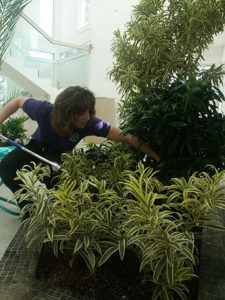How to Keep Plants Pest-free Indoors
Using Integrated Pest Management for indoor plantscapes
When working with live plants, inside or out, management of pests is paramount to success. Integrated Pest Management (IPM) is a long-term effective and environmentally sensitive practice to maintain healthy live plants.It is supported by the Environmental Protection Agency.

Indoor plants are susceptible to a wide variety of pests. In some cases, the plants are vulnerable due to lack of light, temperature changes, and dry air.
Chemical pesticides tend to move up the food chain, posing a harm to not only pests but humans who encounter the treated plants as well. As an alternative, IPM is an ecologically and economically friendly approach to caring for indoor plants. It requires research, a set level of acceptable pest damage and a plan to monitor and safely treat any damage done by predatory pests.
To achieve success using IPM, control measures are set in place and strategies to protect the plants begin with those that are considered least disruptive to the overall environment. The goal is to reduce any threats to the plant while maintaining levels of insects and concerns at what is an acceptable level, without a considerable damage to the ornamental quality of the foliage.
IPM focuses on resistant plant varieties, cultural practices, mechanical and biological controls -all before the use of pesticides.
When designing or working to maintain interior plantscapes, the environment may be altered to reduce or deter any known pests. This might mean changing the PH of the soil or choosing plants most resistant to pests. Once the plants are installed, routine maintenance will include checking for pests and monitoring the overall conditions for the plantscape. Rotating, cleaning and watering are all part of this process.
It’s worth the extra effort to maintain safe, healthy and lasting interiorscapes. Ask us how to create an IMP for your indoor plants. Learn more at Planterra.com.
